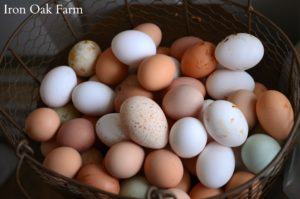 No matter the age of the student, there is something to learn in witnessing the hatching process. Whether it’s a toddler in preschool or a senior in High School, the miracle of birth is always a fascinating moment. Heck! I’m 37 and I’ve hatched hundreds of chicks, and I’m still learning and seeing new things in my incubators each spring.
No matter the age of the student, there is something to learn in witnessing the hatching process. Whether it’s a toddler in preschool or a senior in High School, the miracle of birth is always a fascinating moment. Heck! I’m 37 and I’ve hatched hundreds of chicks, and I’m still learning and seeing new things in my incubators each spring.
I’m also happy to announce that I will be offering a curriculum to help teachers make the most of the hatching experience. It will guide you through the process and give you ideas for discussion in the classroom! Coming soon!
What Can Students Learn from the Hatching Process?
Hatching chicks can be as involved as you would like it to be for your class. It can be a simple experiment that is going on in the background of your normal classroom curriculum, or it can be a very involved experiment, focusing on biology, reproduction, anatomy, cell division, etc. It can also act as a hub in developing social skills such as working together to nurture the chicks, team building, organization, decision making, and leadership, (who’s in charge of what when it comes to hatching and care for the growing embryos). It is a wonderful example of hands-on learning in the classroom.
The amount of involvement also depends on the age of the students who are participating. You could have them write papers, practice using the scientific method (the hypothesis, theory, outcome, etc.) It’s a great subject for observation journals with illustrations and charts, or for younger children you can do craft projects with feathers and construction paper. It’s a great topic for reports, essays, and art projects. It involves reproduction, anatomy, biology, cell division, and countless opportunities for related projects, reports, quizzes, essays, and art projects.
What is involved?
 As a teacher who has never hatched chicks, you might be asking; what am I getting myself into? And it is true that there will have to be some planning, organizing, and forethought before you jump in.
As a teacher who has never hatched chicks, you might be asking; what am I getting myself into? And it is true that there will have to be some planning, organizing, and forethought before you jump in.
It takes approximately 21 days for a chick to hatch so this will be at least a 21-day commitment for your classroom. Probably longer as it often takes 48 hours for a chick to completely hatch after the first break in the shell.
You will have to find hatching eggs. If you live in a rural farming community chances are a student at your school might be able to help you out. However, if you live in the city, you might have to find a breeder in your area, or have fertile eggs shipped to you.
You will also have to find a responsible home for the chicks once they’ve hatched.
Humidity
You will have to set up the incubator keeping water and humidity at the appropriate levels. Weekend spans should be ok if water is added at the end of the day Friday, then first thing Monday morning. See my post Incubation Series Part 3: Choosing an Incubator, Setup and Collecting Eggs for more information on incubator humidity.
Egg turning
 Eggs also need to be turned at the very least 3 times per day to stop the yolk from adhering to the shell. Because of this, I would highly recommend using an incubator with an automatic turning mechanism. Otherwise, someone will have to come in on the weekend and turn the eggs at least 3 times per day. I also don’t recommend transporting the eggs. In other words, having a student (or yourself) bring the incubator home to tend to the eggs over the weekend. Transporting eggs is dangerous to the chicks and you will get large fluctuations in temperature and humidity if the incubator is unplugged for travel…
Eggs also need to be turned at the very least 3 times per day to stop the yolk from adhering to the shell. Because of this, I would highly recommend using an incubator with an automatic turning mechanism. Otherwise, someone will have to come in on the weekend and turn the eggs at least 3 times per day. I also don’t recommend transporting the eggs. In other words, having a student (or yourself) bring the incubator home to tend to the eggs over the weekend. Transporting eggs is dangerous to the chicks and you will get large fluctuations in temperature and humidity if the incubator is unplugged for travel…
Sanitation
Hatching eggs is a very safe activity, but proper hand washing for anyone who handles the eggs, incubator or chicks should be monitored.
Gathering Supplies
Incubator
 Borrowing an incubator can help keep costs down. You can also find incubators at local farm stores or online.
Borrowing an incubator can help keep costs down. You can also find incubators at local farm stores or online.
Fertile hatching eggs
A local breeder might be able to help you out. Check animal classifieds online. Facebook has some groups that sell eggs. You can also order hatching eggs from online hatcheries and they will mail them to you.
Candler
To see the growth of the chick through the shell. A basic candler can be made from a flashlight, paper towel tube, and a dark room. Darken the room, set the egg on the paper tube and shine the light through the other end focusing the light toward the egg. This will give you a silhouette view of what happening inside the egg. Learn more at Incubation Series Part 4: The Long Wait, Candling and Hatching Day
Brooder
 (Where the chicks live after they’ve hatched) If someone is taking the chicks within a day of them hatching, then you won’t need a brooder. But if you plan on keeping the chicks in the classroom then you will need to set up a temperature-controlled box. See post Setting Up Your Brooder for more information.
(Where the chicks live after they’ve hatched) If someone is taking the chicks within a day of them hatching, then you won’t need a brooder. But if you plan on keeping the chicks in the classroom then you will need to set up a temperature-controlled box. See post Setting Up Your Brooder for more information.
Timing
Hatching eggs stay viable for about 10-14 days after they’ve been laid by the chicken so you have a bit of wiggle room especially if you have to order them online and allow for shipping time.
You also don’t want your chicks to hatch on the weekend when school is out. Plan for your hatch on a Wednesday. That way you can add the higher humidity levels for lockdown on Monday. Lockdown is the last 2-3 days of incubation where the turning stops and the humidity goes up. You should not open the incubator after lockdown. It also gives you the rest of the week to allow for hatching and brooder set up and observation. Work backward 21 days in your calendar so you know what date to set the eggs in the incubator.
Tips for Success!
Using light-colored eggs (like white shells) will help make it easy to see development in the candling process. Brown eggs can sometimes be hard to see through.
If you can, use an incubator with a large viewing window. There are models that are very observer friendly. This way you don’t have to open the incubator to see how the chicks are progressing.












